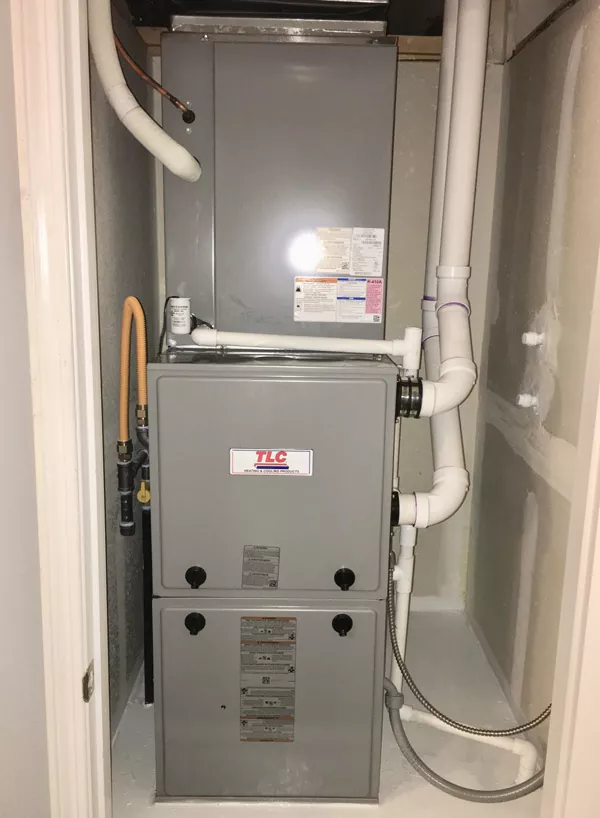Choose the best HVAC company for your home's climate control needs
Choose the best HVAC company for your home's climate control needs
Blog Article
The Ultimate Overview to Furnace Setup for a Cozy Home
Heater installation is a vital element of keeping a comfortable home environment, particularly during the cooler months. Comprehending the numerous types of furnaces available and the importance of choosing the proper size can considerably affect both efficiency and convenience degrees. Moreover, an extensive setup process, matched by the right tools and materials, ensures optimal efficiency. This overview aims to gear up property owners with the knowledge required to make enlightened decisions and execute effective upkeep techniques. As you think about these elements, the question continues to be: what actions can you take to guarantee your heating system serves you well for years ahead?
Types of Heaters

Gas furnaces are the most typical option as a result of their efficiency and lower operational prices. They make use of gas or lp, supplying fast home heating and regular performance, making them optimal for cooler environments.
Electric heaters, while generally easier to install and maintain, have a tendency to have higher operational expenses. They are typically preferred in locations where gas solution is inaccessible or for homes with existing electrical framework.
Oil heaters, though much less typical today, stay a feasible choice in specific regions. They shed home heating oil, which can be helpful throughout cooler months, yet their reliance on oil distribution presents potential challenges.
In addition, there are high-efficiency designs available across these kinds, which can significantly lower power intake and energy expenses - furnace installation. Ultimately, understanding these heater kinds will help homeowners pick a system that straightens with their heating needs, spending plan, and power preferences
Choosing the Right Dimension
Choosing the appropriate dimension for a heater is essential to making certain ideal performance and power effectiveness. An undersized heater will struggle to preserve comfortable temperature levels during the cold months, bring about enhanced wear and tear, greater energy costs, and potential system failing. On the other hand, an oversized heating system may cycle on and off as well frequently, causing inefficient home heating and uneven temperature level distribution within the home.
To establish the appropriate heater size, an estimation called the Guidebook J load estimation should be done. This process examines various aspects, including the square video footage of the home, insulation degrees, window sizes, and neighborhood climate conditions. This thorough analysis makes sure that the heater meets the certain home heating demands of the area.

Installation Refine Review
In regards to materials, you will need ductwork, insulation, and securing tape to guarantee optimal air movement and power effectiveness - furnace installation. It is also vital to have a new furnace filter accessible, together with venting products, such as PVC pipe or steel flue, depending upon the kind of heater being set up
Safety tools, including handwear covers, safety glasses, and a face mask, is also critical page to secure against dirt and debris throughout setup. Having all these devices and products easily available not just improves the procedure but additionally enhances the safety and security and performance of the heating system installment.
Upkeep Tips for Long Life
To guarantee the long life of your heating system, it is vital to execute a regular maintenance timetable that addresses vital elements of the system. Beginning by replacing or cleansing the air filter each to 3 months, as a blocked filter can limit air flow and reduce performance. Additionally, examine and clean the blower assembly to stop dirt buildup that can prevent efficiency.
Next, inspect the thermostat settings and rectify if necessary to make sure exact temperature level regulation. Examine the ductwork for leakages or clogs, as this can bring about energy loss and unequal home heating. Routinely lube the motor and bearings according to the maker's referrals to minimize wear and tear.
Professional evaluations must happen each year, where a certified professional can analyze the heater's total problem, look for gas leakages, and make certain that safety and security attributes are operating appropriately. Take into consideration mounting a programmable thermostat to maximize energy usage and maintain regular home temperature levels. By taking on these upkeep methods, you can enhance i was reading this your furnace's performance, expand its life expectancy, and eventually enjoy a cozy and comfy home atmosphere.
Final Thought

Report this page